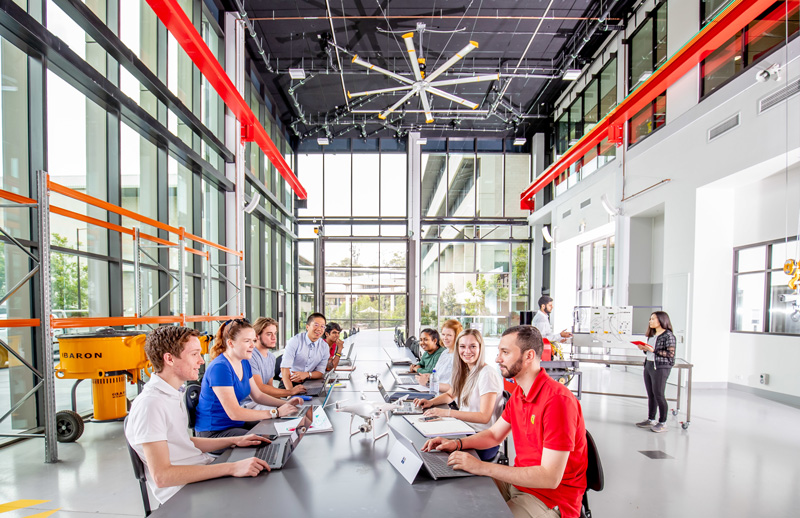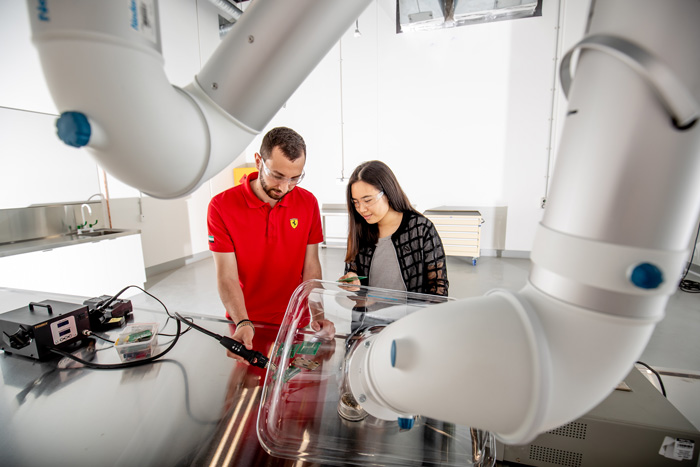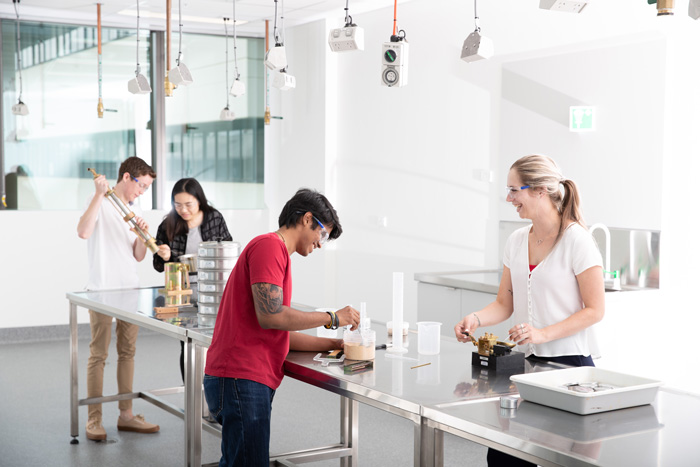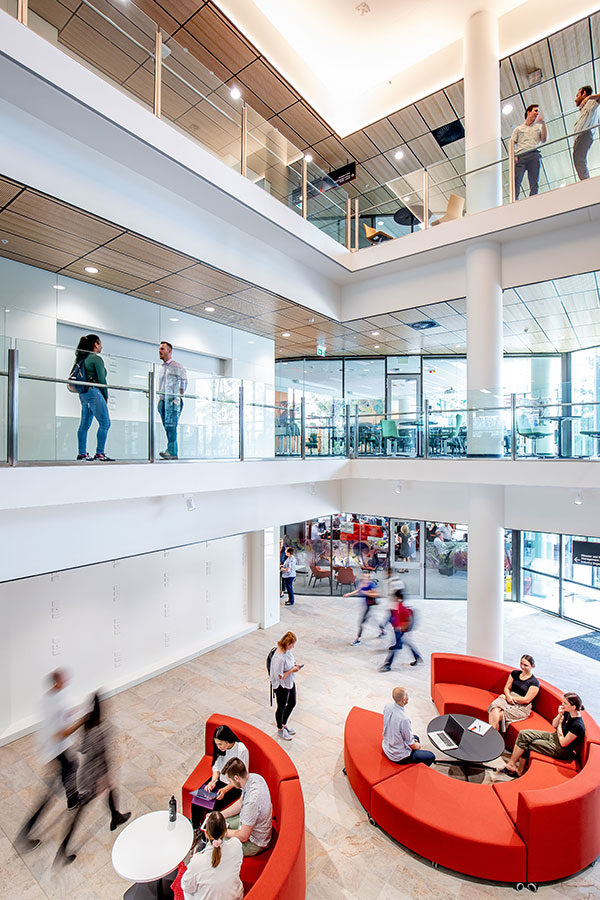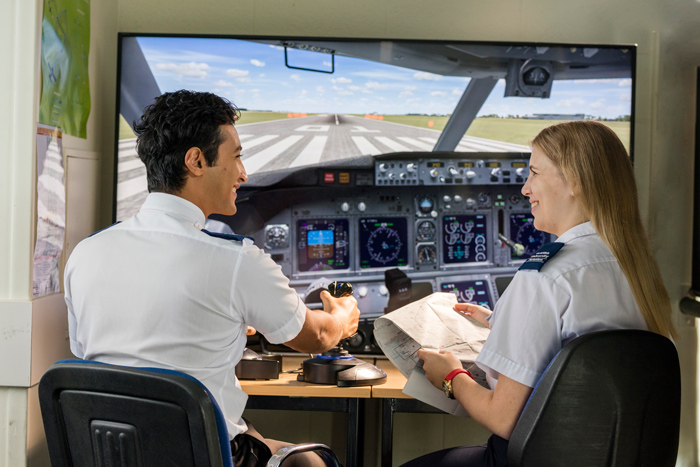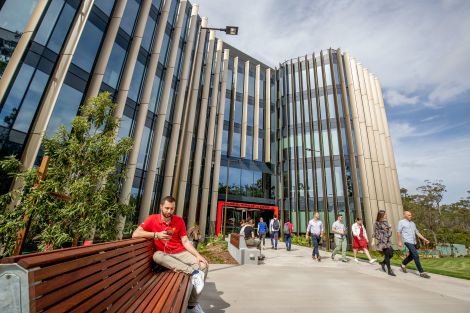Creating new ways to enhance student learning
Our Engineering, Technology and Aviation building is a space for innovation where students and staff come together to enhance learning potential. With the latest in hands-on technology, the building offers engineering, IT and aviation students the opportunity to learn in spaces designed to reflect the workplace. Featuring six levels of adaptable, multi-functional spaces, the 6,000 m2 building boasts the latest in engineering, IT and aviation technology, offering students enhanced opportunities for multidisciplinary education.
What's featured on each level?
'A living laboratory'
The building features specialised laboratories, workshops, informal learning spaces, engagement spaces, a simulation studio and an energy research zone on its roof. Three of the bottom floors can be converted into event spaces that take advantage of a central atrium, and the 10m high laboratory includes a gantry upon which a lightweight aircraft or vehicle can be suspended.
The whole building is considered a ‘Living Laboratory’ where more than 30 sensors relay information about the building’s energy, water and structural performance in real-time to students, ready for use within their studies. With strong ties to the industry, the building is a significant investment in creative innovative spaces for students and staff to excel.
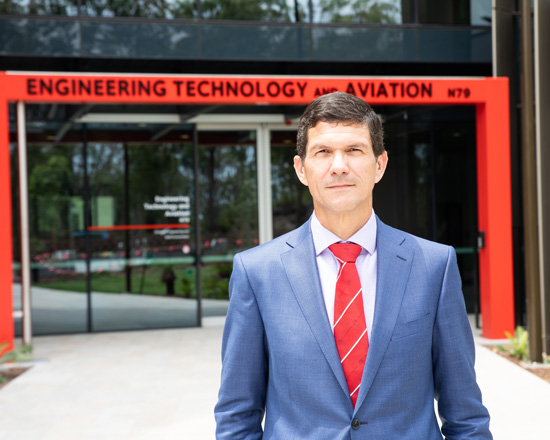
Tour n79
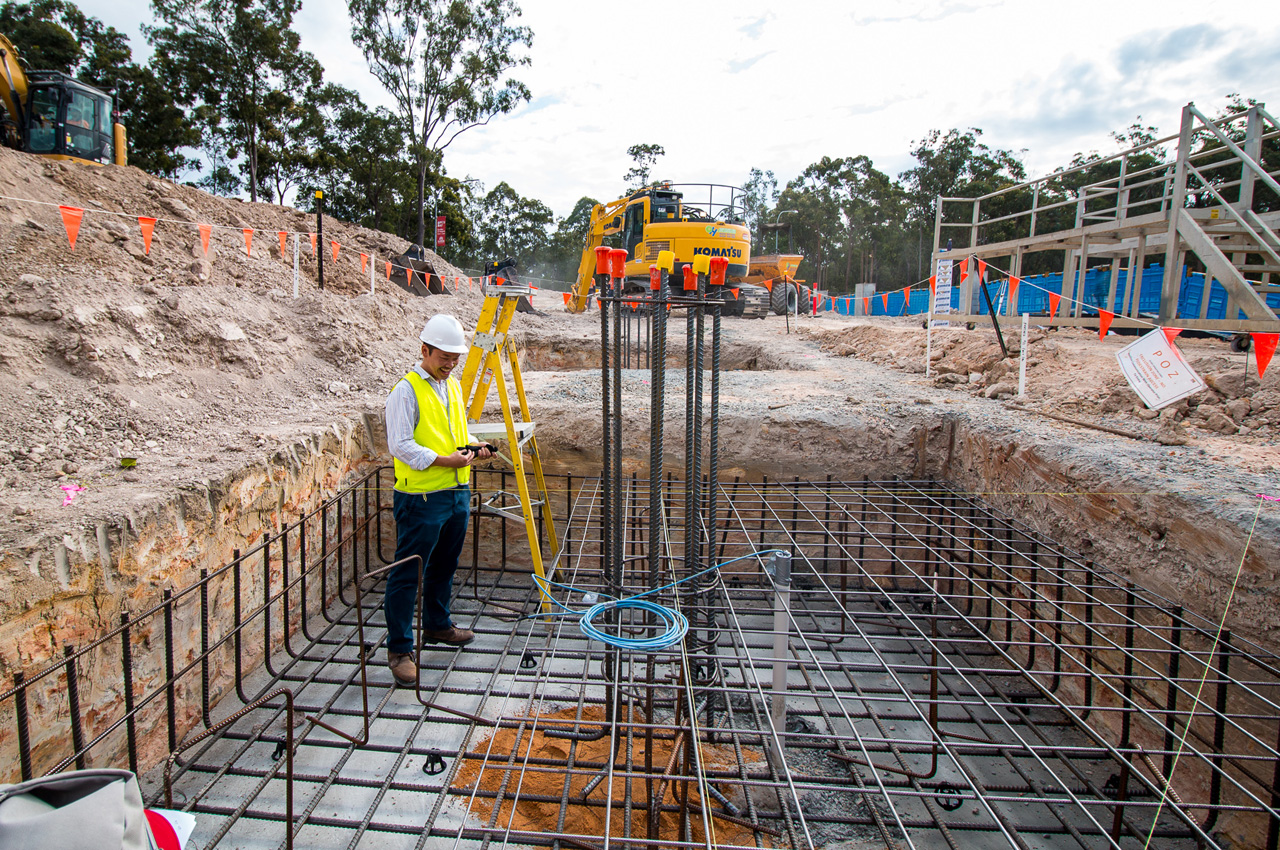 Pictured: Dominic Ong, installing vibrating wire piezometers, earth pressure cells, rain gauge and a data logger in the building structural elements.
Pictured: Dominic Ong, installing vibrating wire piezometers, earth pressure cells, rain gauge and a data logger in the building structural elements.
Learning opportunities
The School of Engineering and Built Environment has invested in the opportunity to collect data on the building's structural health and vibration monitoring under different ambient conditions.
Geotechnical sensors have been installed across the foundations of the buildings to accurately and reliably collect data on:
- ground water pressure and the fluctuations experienced during weather/environment conditions
- bearing pressure on the soil or rock beneath the building
- rainfall.
The data will provide students with unique learning experiences and become a valuable resource for assignments, giving students the opportunity to work on a real-life industry project.
It will also provide opportunities in HDR research in areas of big data analytics, predictive modelling and structural health monitoring and feedback system.
Tehya Hethorn
Bachelor of Engineering (Honours) in Civil Engineering/Bachelor of Environmental Science
“Griffith’s facilities are excellent and provide a multitude of opportunities for students to set themselves up for success. Learning the theory behind Engineering and Environmental practices, and then seeing the application of that theory in the industry or in state-of-the-art labs is really exciting. It’s also been incredibly beneficial in my learning and retention of the information, as well as motivating me to drive to succeed.”

Contact us
General enquiries
Visit Services@Griffith to see the full list of available services.
